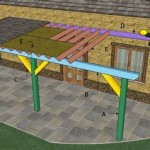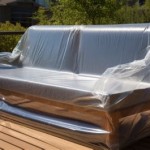How To Fix Wicker Patio Chairs
Wicker patio chairs offer a blend of aesthetic appeal and comfortable seating, making them a popular choice for outdoor spaces. However, the natural or synthetic materials used in their construction can be susceptible to damage from weather exposure, general wear and tear, and accidental mishaps. Addressing these issues promptly can significantly extend the lifespan of your wicker furniture and maintain its appearance. This article provides a comprehensive guide to repairing common problems encountered with wicker patio chairs.
Identifying the Damage
Before embarking on any repair work, a thorough assessment of the damage is crucial. Wicker chairs are typically crafted from natural materials like rattan, bamboo, or synthetic materials such as resin. Natural wicker is more prone to cracking, splintering, and unraveling, especially in humid or excessively dry conditions. Synthetic wicker, while generally more durable, can still suffer from fading, cracking, or breakage due to prolonged sun exposure or physical impact. Conducting an inspection, including examining the frame, the weaving, and any joints or connections, will provide an accurate picture of the necessary repairs.
Look for the following common issues:
*Broken Strands:
These are individual pieces of wicker that have snapped or become detached from the weave. *Unraveled Weave:
This occurs when the weaving pattern loosens, creating gaps or a generally disheveled appearance. *Cracked or Splintered Wicker:
This often happens with natural wicker exposed to fluctuating temperatures and humidity levels. *Sagging Seats or Backs:
This indicates that the supporting structure or the woven material has weakened over time. *Loose Joints or Connections:
This affects the stability and structural integrity of the chair, making it wobbly or unsafe. *Faded or Discolored Wicker:
This is primarily a cosmetic issue but can detract from the overall appearance of the chair. *Mold or Mildew Growth:
This is common in humid environments and can damage the wicker and pose health risks. *Damage to the Frame:
The frame, typically metal or wood, can rust, rot, or bend, compromising the chair's overall stability.Once the damage is identified, categorize the repairs based on their complexity. Minor issues like broken strands or loose weaves can often be addressed with basic tools and materials. More significant problems, such as frame damage or extensive unraveling, may require specialized expertise or replacement parts.
Repairing Broken or Unraveled Wicker
Repairing broken or unraveled wicker strands involves several steps, starting with gathering the necessary materials. These typically include:
*Replacement Wicker:
Matching the existing wicker in terms of material, color, and weave pattern is essential for a seamless repair. Wicker can be sourced from specialized furniture repair shops or online retailers. If exact matching is impossible, opt for a close approximation or consider replacing larger sections to maintain uniformity. *Sharp Knife or Scissors:
For trimming and shaping the replacement wicker strands. *Wood Glue or Wicker Repair Adhesive:
A strong adhesive specifically designed for bonding wicker materials. *Clamps or Tape:
To hold the repair in place while the adhesive dries. *Awl or Small Screwdriver:
For manipulating the wicker and tucking ends into the weave. *Protective Gloves:
To protect hands from adhesives and sharp tools. *Sandpaper (Optional):
For smoothing rough edges or splintered areas.The repair process typically involves the following steps:
1.Prepare the Area:
Clean the damaged area with a damp cloth to remove any dirt or debris. If there are loose splinters, carefully sand them down to create a smooth surface. 2.Cut the Replacement Wicker:
Cut the replacement wicker strand slightly longer than the damaged section to allow for overlap and secure attachment. 3.Apply Adhesive:
Apply a small amount of wood glue or wicker repair adhesive to the ends of the broken strand and the corresponding area on the chair's weave. 4.Secure the Replacement:
Carefully position the replacement strand, weaving it into the existing pattern. Use an awl or small screwdriver to gently guide the strand into place and ensure it aligns with the surrounding weave. 5.Clamp or Tape:
Secure the repair with clamps or tape to hold the replacement strand in place while the adhesive dries. Allow the adhesive to dry completely according to the manufacturer's instructions, typically for several hours or overnight. 6.Trim Excess:
Once the adhesive is dry, carefully trim any excess wicker with a sharp knife or scissors, ensuring a clean and flush finish. 7.Finishing Touches:
If necessary, apply a sealant or varnish to the repaired area to protect it from moisture and enhance its durability.For unraveling weaves, the process is similar, but may require re-weaving longer sections of the wicker. Use the awl to gently lift adjacent strands and thread the replacement wicker through, following the original pattern. Secure the ends with adhesive and clamps and trim any excess after drying.
Addressing Frame Damage and Structural Issues
The frame of a wicker patio chair provides the essential structural support. Damage to the frame, whether it's made of wood or metal, can compromise the chair's stability and safety. Addressing these issues promptly is crucial.
Wooden Frames:
Wooden frames are susceptible to rot, decay, and breakage. Inspect the frame for signs of water damage, insect infestation, or structural cracks. Minor cracks can often be repaired with wood glue and clamps. Apply a generous amount of wood glue to the crack and clamp the pieces together until the glue is fully cured. For more significant damage, consider using wood filler to fill in gaps or replace entire sections of the frame with new wood. Ensure that the replacement wood is treated to resist moisture and insect infestation.
Metal Frames:
Metal frames are prone to rust and corrosion, especially in humid environments. Remove any rust with a wire brush or sandpaper. Apply a rust-inhibiting primer and paint to protect the metal from further corrosion. If the frame is bent or damaged, consider consulting a professional welder to repair or reinforce the affected area. Loose joints can often be tightened with replacement bolts or screws. If the screw holes are stripped, use wood filler or epoxy to create a new, secure anchor point.
Sagging Seats or Backs:
Sagging seats or backs often indicate that the supporting wicker weave has weakened. In some cases, tightening the existing weave by carefully manipulating individual strands with an awl can restore some of the support. However, if the sagging is severe, consider adding additional support underneath the seat or back. This can be accomplished by adding wooden slats or metal bracing to reinforce the structure. Secure these supports with screws or bolts, ensuring they are evenly distributed to provide uniform support.
When working with metal or wood, always wear appropriate safety gear, including gloves, eye protection, and a dust mask.
Cleaning and Preventing Further Damage
Regular cleaning and maintenance are essential for preserving the condition of wicker patio chairs and preventing further damage. Frequent cleaning removes dirt, dust, and debris that can accumulate and contribute to wear and tear. Preventing further damage involves protecting the chairs from the elements and addressing minor issues promptly.
Cleaning Wicker Chairs:
Clean wicker chairs at least once a month, or more frequently if they are exposed to harsh weather conditions. Use a soft brush or vacuum cleaner with a brush attachment to remove loose dirt and dust. For deeper cleaning, use a mild soap solution and a damp cloth or sponge. Avoid using harsh chemicals or abrasive cleaners, as these can damage the wicker. Rinse the chairs thoroughly with clean water and allow them to dry completely before using them. For mold or mildew growth, use a solution of bleach and water (1 part bleach to 10 parts water) to clean the affected areas. Wear gloves and eye protection when using bleach and rinse the chairs thoroughly after cleaning.
Protecting Wicker Chairs:
Protect wicker chairs from prolonged exposure to sunlight and moisture. When not in use, store the chairs in a covered area or use furniture covers to shield them from the elements. Apply a sealant or varnish to the wicker to protect it from moisture and UV damage. Reapply the sealant or varnish annually, or as needed. Regularly inspect the chairs for signs of damage and address any minor issues promptly. Tighten loose joints, repair broken strands, and clean any mold or mildew growth to prevent further deterioration.
Long-Term Care:
Consider storing wicker patio chairs indoors during the off-season to protect them from harsh weather conditions. Before storing the chairs, clean them thoroughly and allow them to dry completely. Store the chairs in a dry, well-ventilated area to prevent mold and mildew growth. Periodically inspect the chairs during storage to ensure they remain in good condition. By following these maintenance tips, the lifespan of your wicker patio chairs can be significantly extended and retain their beauty and functionality for years to come.

Fixing Outdoor Rattan Furniture A Pretty Life In The Suburbs

Resin Wicker Patio Furniture Unraveling Hometalk

5 Easy Steps To Replace The Wicker Strands Damaged

How To Repair Resin Wicker Chairs Using Glue Gun Atc Furniture 2024

Should I Repair Or Recover The Arms Of These Wicker Chairs Hometalk

How To Fix Wicker Patio Furniture

How To Repair And Re Wicker Furniture Patio Ions

How To Fix The L Off Broken Weaving Of Chair

Wicker Furniture Repair Guide Jessica Welling Interiors

Replacing Repairing Dryrotted Fabric On Outdoor Furniture Hometalk
See Also








